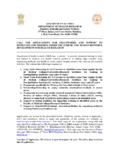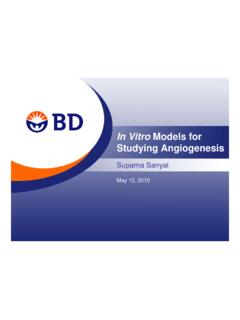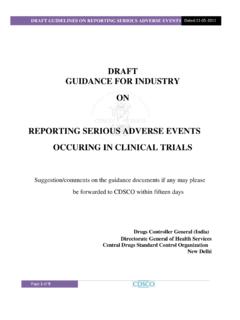Transcription of Guidelines for the Clinical Care of - Thalassemia
1 Guidelines for the Clinical care of Patients with Thalassemia in CanadaContributorsWriting GroupDr. Farzana Sayani; Dr. Molly Warner; Dr. John Wu; Durhane Wong-Rieger, PhD; Kimberly Humphreys; Dr. Isaac Odame (Chair)Project Planning GroupDr. Victor Blanchette; Bessie Calabria; Anne Chun, RN; Lisa Cook, MSW; Angela Covato; Dr. Nancy Dower; Riyad Elbard; Dr. Melissa Forgie; Kathy Grouchy, RN; Dr. Melanie Kirby-Allen; Dr. Robert Klaassen; Ken Lui; Dr. Isaac Odame; Andre Oliveira; Dr. Jacob Pendergrast; Dr. Ben Saxon; Dr. Denis Soulieres; Bev Tyler, RN; Dr. Linda Vickars; Dr. Molly Warner; Durhane Wong-Rieger, PhD; Dr. John WuReviewersAnne Chun, RN; Dr. Mark Crowther; Dr. Nancy Dower; Dr. Melanie Kirby-Allen; Dr. Robert Klaassen; Dr. Jacob Pendergrast; Dr. Ian Quirt; Dr. Denis Soulieres; Dr. Molly Warner; Dr. Kathryn WebertInternational ReviewersDr. Paul Telfer, Royal London Hospital, ; Mr.
2 George Constantinou, United Kingdom Thalassaemia Society (UKTS); Dr. Alan Cohen, Children s Hospital of Philadelphia, USA Anemia Institute for research & Education151 Bloor Street West, Suite 600 Toronto, Ontario M5S 1S4 CanadaTelephone: 1-877-992-6364 Website: Foundation of Canada340 Falstaff AvenueNorth York, Ontario M6L 3E8 CanadaTelephone: 416-242-THAL (8425)Website: for the Clinical care of Patients with Thalassemia in Canada iForewordFrom the Anemia Institute for research and EducationThe Guidelines for the Clinical care of Patients with Thalassemia in Canada represent an important milestone toward excellence in patient-centred care for all patients and families affected by Thalassemia in Canada. Over the years, we have seen significant advances in medical technology, including assessment, monitoring and therapy for Thalassemia . These developments, along with better knowledge, supportive care , and self- care , have meant children with Thalassemia have been able to participate fully in school, sports, and other activities with their peers.
3 Our young adults have been able to complete their educational goals, including advanced degrees, and to lead full, productive lives with careers and families. In every respect, the opportunity has been here in Canada to provide the highest standard of care to all those affected by , the patient (and Clinical ) community has been well aware that not everyone was achieving that promise. While the Canadian healthcare system is among the best in the world, universal healthcare did not necessarily mean that all patients, especially those with rare disorders, had access to the same standard. The Thalassemia community has had to cope with insufficient Clinical resources, including the lack of physicians, nurses, social workers and other specialist and supportive care workers. We have experienced the sorrows of patients and families dealing with complications and even deaths that in some cases may have been avoidable.
4 We have also struggled with the lack of awareness and knowledge among the patient community and our inability to reach many families, including those newly arrived to Canada. We believe these Guidelines provide a pathway toward excellence in care and serve as a benchmark for all of us to gauge our success. These Guidelines were inspired by the Standards for the Clinical care of Children and Adults with Thalassaemia in the UK and are the result of collaboration between the Clinical and patient community in Canada. We are indebted to Dr. Isaac Odame who inspired and led this process and to Dr. Farzana Sayani who penned the document as a labour of love. We also salute all of the patients and healthcare professionals who contributed to the Guidelines and to the on-going care and support for our Thalassemia community. With these Guidelines , we must now move forward to challenge the healthcare system and ourselves to provide the resources and support to assure that every patient and family with Thalassemia in Canada has access to the highest standard of care Wong-Rieger, PhDPresident, Anemia Institute for research & Educationii Guidelines for the Clinical care of Patients with Thalassemia in CanadaForewordFrom The Hospital for Sick Children It has been a great pleasure and honour to be involved in the development of the Guidelines for the Clinical care of Patients with Thalassemia in Canada.
5 Inspired by the Standards for Clinical care document produced by the UK Thalassemia Society, the Canadian Guidelines are the result of strong collaboration between Canadian health care professionals and the Thalassemia patient community and their acknowledge the efforts of my fellow colleagues in the Writing Group, in particular Dr. Farzana Sayani, as well as the contributions made by the Canadian and international is our sincere hope that these Guidelines will provide relevant and useful information to health care professionals involved in the Clinical care of Thalassemia patients across Canada with a goal to optimize health care delivery and patient outcomes. It is also helpful that patients and their families would be able to evaluate their own Clinical management and treatment Odame, MB ChB, MRCP (UK), FRCPCH, FRCPath, FRCPCD ivision of Haematology/OncologyThe Hospital for Sick Children, TorontoGuidelines for the Clinical care of Patients with Thalassemia in Canada iiiForewordFrom the Thalassemia Foundation of Canada Our dream of national Guidelines for the treatment of Thalassemia in Canada is now a reality.
6 As President of the Thalassemia Foundation of Canada, I am pleased that these Guidelines set a national standard of care that can ensure consistency in delivering the highest quality care for all Thalassemia patients regardless of where they live in Canada or the institution that delivers their treatment and care . To achieve this standard, our Thalassemia treatment programs must be appropriately resourced. These Guidelines specify the healthcare personnel and other resources necessary for Thalassemia centres and other sites to deliver optimal comprehensive preventive and therapeutic care . The Guidelines have the added benefit of serving as a resource to train healthcare professionals new to Thalassemia and providing the benchmarks and tools for the healthcare system, providers, and patients to evaluate our performance and to make necessary Thalassemia Guidelines give patients and their families hope that the scientific and psychosocial progress we have made over the past couple of decades will be a reality for all those affected by Thalassemia in Canada.
7 On behalf of Thalassemia patients and the Thalassemia Foundation of Canada, I would like to thank all members of the Writing Group in particular, Dr Odame and Dr Sayani for dedicating their time and effort to completing this document. I also would like to thank the Anemia Institute for research & Education and Durhane Wong-Rieger for leading this initiative and overseeing it ElbardPresident, Thalassemia Foundation of CanadaGuidelines for the Clinical care of Patients with Thalassemia in Canada EXECUTIVE SUMMARY OF STANDARDS ..1 INTRODUCTION ..7 Goals of the Document ..7 Scope and Organization of the Document ..7 Levels of Evidence ..8 OVERVIEW OF Thalassemia ..9A. COMPONENTS OF COMPREHENSIVE Thalassemia care ..11A1. A Network of care ..11A2. Lifelong Education and Communication Between Patient and Health care Team ..14B. MANAGEMENT OF Thalassemia ..15B1. Initial Management of the Newly Diagnosed Infant.
8 15B2. Transfusion Support in Thalassemia ..16B3. Iron Overload and Chelation Therapy ..21B4. Psychosocial Aspects of Thalassemia care ..29B5. Hematopoietic Stem Cell Transplantation (HSCT) ..31B6. Transition from the Pediatric to Adult care Setting ..33C. COMPLICATIONS OF Thalassemia ..35C1. Cardiac Complications ..35C2. Liver Complications ..37C3. Endocrine Complications ..38C4. Bone Complications ..40C5. Fertility and Pregnancy ..42C6. Other Significant Complications: Infection, Dentition, Nutrition ..44D. Thalassemia INTERMEDIA ..47 APPENDIX 1: LEVELS OF EVIDENCE ..51 APPENDIX 2: GLOSSARY .. of ContentsGuidelines for the Clinical care of Patients with Thalassemia in Canada 1 Thalassemia is a relatively rare congenital blood disorder, which has life-long implications for patients and families. The care of patients with Thalassemia is most adequately delivered by comprehensive care centres staffed by professionals experienced in the treatment of the disease and its complications.
9 The following document is meant primarily for health care professionals involved in the care of affected patients and is to provide members of the Thalassemia treating team with relevant information, which should improve health care delivery and patient outcomes. As active participants in their ongoing care , patients and families may also use the document to review their own management and treatment Guidelines are based on information obtained from published literature, Canadian and international expert opinion, and views of patients and families. The document was reviewed by a team of national hematologists and health care professionals involved in the care of Thalassemia patients, international experts and a representative group of patients and their families. Reference was also made to the previously published Thalassemia International Federation s Clinical Management for Thalassemia and the Standards for the Clinical care of Children and Adults with Thalassaemia in the ,2 These Guidelines are developed by a Canadian team and intended primarily for application in the Canadian document is divided into chapters focusing on components of the comprehensive Thalassemia care team, treatment of Thalassemia major, complications of Thalassemia major and Thalassemia intermedia.
10 A. Components of Comprehensive Thalassemia CareA1. A Network of CareEach program should consist of a collaborative regional network of one or more specialized Thalassemia centres and affiliated Thalassemia satellite clinics. Each program should have a formalized system for specialized Thalassemia services that is appropriately configured to the geographical location and size of the patient population. All patients should have access to the specialist centre either for routine Thalassemia -related care if living nearby or for more specialized services and regular annual expert Clinical review if living far regional networks may choose to share certain resources but should have effective communication, accountability, and avenues for self-evaluation and staff Lifelong Education and Communication Between Patient and Health care TeamPatients and families should be offered comprehensive age-appropriate education about Thalassemia .






